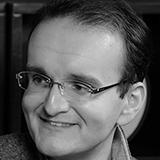S&P Global Offerings
Featured Topics
Featured Products
Events
S&P Global Offerings
Featured Topics
Featured Products
Events
S&P Global Offerings
Featured Topics
Featured Products
Events
Banking & Capital Markets
Economy & Finance
Energy Transition & Sustainability
Technology & Innovation
Podcasts & Newsletters
Banking & Capital Markets
Economy & Finance
Energy Transition & Sustainability
Technology & Innovation
Podcasts & Newsletters
S&P Global Offerings
Featured Topics
Featured Products
Events
Research — 17 Feb, 2022
Introduction
The Quantum Computing for Business conference returned in-person in Santa Clara, Calif., in December, following a virtual event in 2020 due to travel constraints from the ongoing COVID-19 pandemic. The three-day event featured presentations from dozens of firms across the quantum computing stack — some enterprise firms that are still navigating the practicability of return-to-office policies are, in the interim, generally not participating in in-person events.
As one would anticipate from a conference titled Quantum Computing for Business, or Q2B, real-world implementation stories were shared by hardware, software and professional services firms to reinforce the business-readiness of quantum computers, even in the noisy intermediate-scale quantum, or NISQ, era of computing hardware. This report examines a representative sample of use cases presented at the conference.

The prospect of cracking public key encryption is often cited as an example of the future of quantum computers, although this is a relatively negative framing — quantum computers could be positively utilized to solve actual business problems across a number of industries, as evidenced by the active research projects across a number of industries today. These projects are relatively time-intensive — QC Ware Corp., the conference's principal organizer, notes that "advanced" client projects can take six months from defining the use case to producing a report — and these examples are, generally, abstracts of technical papers submitted to academic journals.
It is possible, perhaps likely, that ongoing work in quantum computing is relatively unpublicized; it is possible that a transformative breakthrough may be closely guarded until the resultant product or business process is well into production to protect a competitive advantage. Likewise, the event horizon for quantum is quite broad: This industry is starting the decade in the NISQ era, with multiple firms setting sights on early error-corrected quantum computers near the end of the decade. That said, the ultimate expression of computing hardware — classical or quantum — is in the software designed for it. Research today into problems that can be addressed by quantum computers is vital to quantum computers one day eclipsing the capabilities of classical computers.

Healthcare
QC Ware and German pharmaceutical firm Boehringer Ingelheim GmbH collaborated on a project simulating large-scale protein-ligand interactions using a quantum-classical hybrid methodology. Their approach uses symmetry-adapted perturbation theory to directly compute the interaction energy through direct expectation values, rather than computing the ground state energy of the dimer and monomer systems separately and subtracting the two to determine the interaction energy, adapting to the capabilities of NISQ-era quantum computers. With classical post-processing, this approach is capable of simulating systems with hundreds of atoms and potentially hundreds of basis functions in the active space.
QC Ware and Swiss healthcare firm Roche Holding AG similarly studied the use of two different quantum neural network techniques for medical image classification — first by employing quantum circuits in training of classical neural networks, and second by designing and training quantum orthogonal neural networks. While researchers note that graphics processing units are extremely efficient in the underlying math (matrix-vector multiplication) in this process, they contend that the study of quantum computing can also lead to novel, faster classical training methods.
Finance
D-Wave Systems Inc. touted its work with financial services provider PayPal Holdings Inc., bringing PayPal's director of AI research, Vidyut Naware, on stage to discuss the use of D-Wave's quantum annealer in fraudulent transaction monitoring using feature selection. PayPal claims to process over $1 billion in user transactions daily, making any percentage of improvement a valuable undertaking; likewise, the nature of fraudulent transaction monitoring requires constant adaptation as criminals innovate new methods of fraud.
QC Ware and The Goldman Sachs Group Inc. explored a method for amplitude estimation on quantum computers, which would provide the quantum speedup for Monte Carlo methods — useful for circumstances such as derivative pricing and credit risk calculation. The experiment evaluated the maximum likelihood estimation, or MLE, and the Chinese remainder theorem, or CRT, techniques, with the MLE approach accurate at depth and the CRT approach more susceptible to noise.
Path optimization
Fujitsu Ltd. and the Hamburg Port Authority collaborated on a project to reduce traffic jams — and, by extension, CO2 emissions — by decreasing dwell times for ships, trucks and cars. The HPA indicated up to a 9% reduction in CO2 emissions, and up to 15% reduced travel time for cars and trucks in the supply chain. Route planning was performed on Fujitsu's Digital Annealer 2 quantum-inspired hardware.
QC Ware and AISIN, a unit of the Toyota Group, collaborated on a hybrid classical-quantum algorithm to solve vehicle routing problems, finding its performance to be competitive with the original classical approach. The researchers characterize it as a prototype that can be scaled up and as an avenue for further study on the role of quantum computing in reinforcement learning.
This article was published by S&P Global Market Intelligence and not by S&P Global Ratings, which is a separately managed division of S&P Global.
Location
Segment

